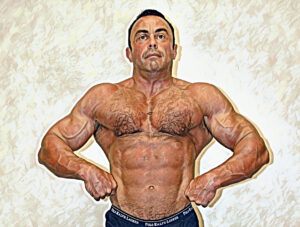Strength Sensei 101: Reps

Insight into how this legendary strength coach developed his training methods
Charles R. Poliquin’s unique approach to strength training begins with repetition. He believed that the repetitions selected influence sets performed, amount of rest taken, and all other loading parameters in strength training. This approach is in contrast with the traditional approaches to program design that begin with exercise selection.
As an exercise science student, the Strength Sensei began studying the correlation between reps and intensity, intensity is defined as how much weight can be lifted as a percentage of a one-repetition maximum (1RM). This means the 1RM for a set was equal to 100 percent. The question was, what percentage was two reps? Or three? Or 10?
To begin answering that question, Strength Sensei developed the following rep/intensity chart in 1986 summarizing the relationship between reps and intensity. Published in a paper he wrote called Strength Training for Elite Athletes, the table was titled “Predicting Maximum Absolute Strength (1 RM) from maximum number of repetitions where repetitions are 20 or less.”
Max Number of Repetitions % of Maximum
1 100
2 94.3
3 90.6
4 88.1
5 85.6
6 83.1
7 80.7
8 78.6
9 76.5
10 74.4
11 72.3
12 70.3
13 68.8
14 67.5
15 66.2
16 65
17 63.8
18 62.7
19 61.6
20 60.6
From here, his next step was to determine what strength quality was worked with each repetition/training intensity. For example, 1-5 reps/85.6 to 100% was best for developing relative strength. Relative strength represents how much force can be produced per unit of bodyweight. Athletes involved in sports with bodyweight divisions want to gain strength but do so without significantly increasing their bodyweight. Consider the case of freestyle wrestler Helen Maroulis.
Maroulis sought the help of the Strength Sensei before the 2016 Rio Olympics. Like many wrestlers, making weight was a challenge for Maroulis, so her workouts had to focus on developing relative strength. When she came to see him, she could not perform a single chin-up – zero; nine months later, she did two reps with a 55-pound dumbbell. The week before leaving for Rio, she did two reps with 66 pounds on the rings, which is much more difficult than a straight bar.
At the Olympic finals, Maroulis faced off against Saori Yoshida, a 3x Olympic champion who had only lost twice in international competitions. Maroulis and Yoshida faced off in the 53-kilo (116-pound) bodyweight division. Maroulis captured gold with a 4-1 victory, becoming the first-ever American to become an Olympic champion in women’s freestyle wrestling.

The next step was to organize these percentages to achieve the desired goal. Citing a 1982 paper from Italy’s Jimmy Pedemonte, the Strength Sensei agreed with the research of Eastern Bloc sports scientists that the best way to design workouts was to alternate between higher intensities (low reps) and lower intensities (high reps) to program design was superior. Said Pedemonte, “…The aim of training is to elicit improvements in load and performance capabilities from the athlete. However, a continued progression on a strength is unthinkable. In this sense, the UNDULATORY modulation proposed itself as the most suitable system for causing better improvements.” [Pedemone, J. Updated Acquisitions about Training Periodization: Part One. National Strength and Conditioning Association Journal, Vol. 4, No. 5, 1982.]
The next step in the program design process was deciding which intensity to perform first, low or high? This led the Strength Sensei to a 1985 coaching seminar by German Sports Scientist Dietmar Schmidtbleicher in Mont Ste. Marie, Quebec. Schmidtbleicher concluded that the most effective strength programs favored cycles that focused on developing muscle mass first. The Strength Sensei published this example for developing absolute strength in 1989:
Weeks 1-2 3-4 5-6 7-8 9-10 11-12
Reps 10-12 4-6 8-10 3-5 5-7 2-3
Sets 3 5 4 5 4 6
Intensity 70-75% 82-88% 75-78% 85-90% 80-85% 90-95%
Volume 30-36 20-30 32-40 15-25 20-28 12-18
From here, derivates could be made focusing on other strength qualities, such as relative strength or hypertrophy. However, consider that in later years, the percentages dropped in these tables as there were many factors influencing them, such as the ratio of fast twitch to slow twitch fibers in a muscle. In other words, “let the reps determine the load.”
Charles R. Poliquin’s quest for knowledge lead him to become one of the most accomplished strength coaches in the world. And one of the biggest “aha moments” in his career was discovering that when it comes to designing workouts, everything begins with the rep! (TSS)
